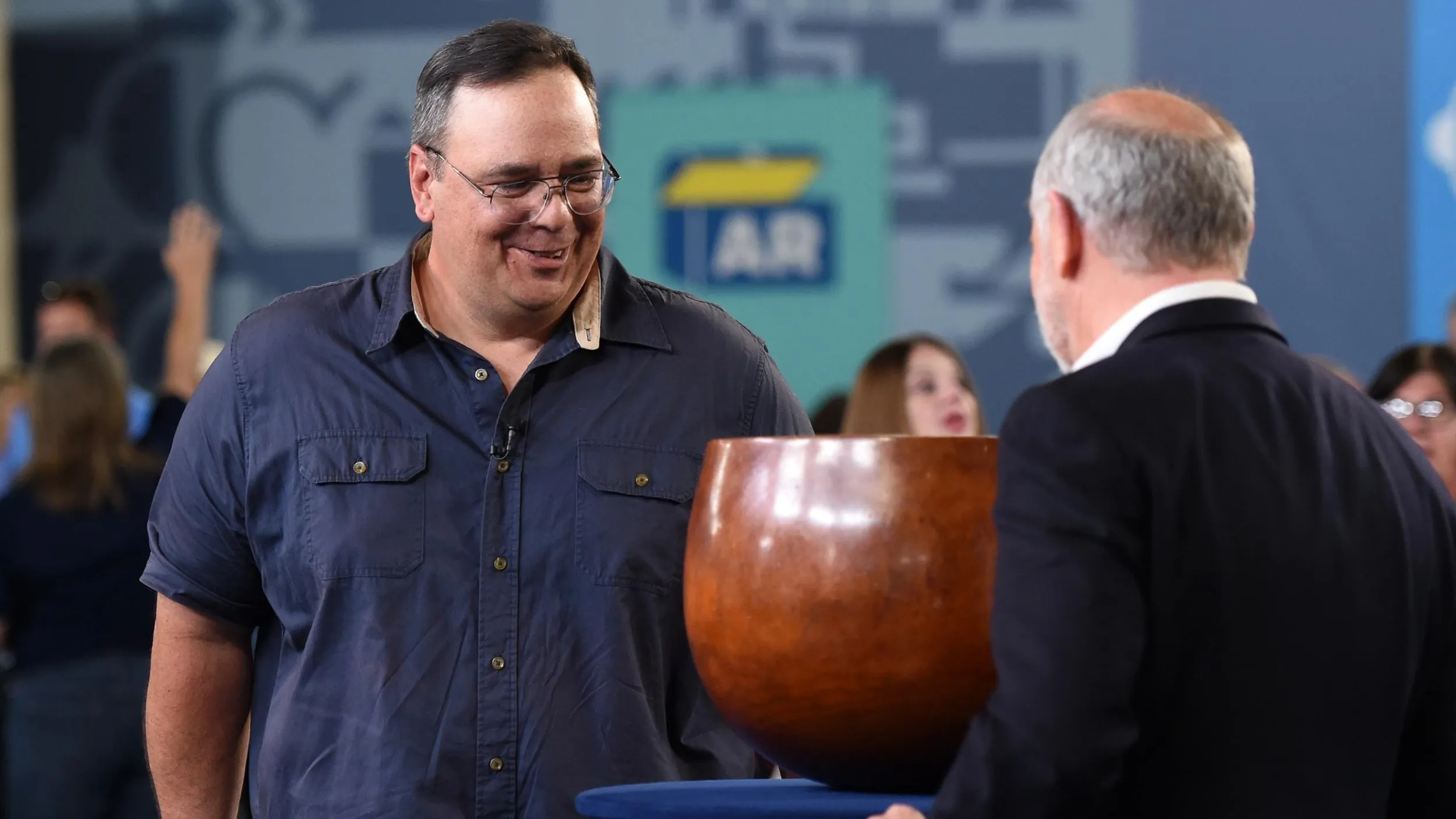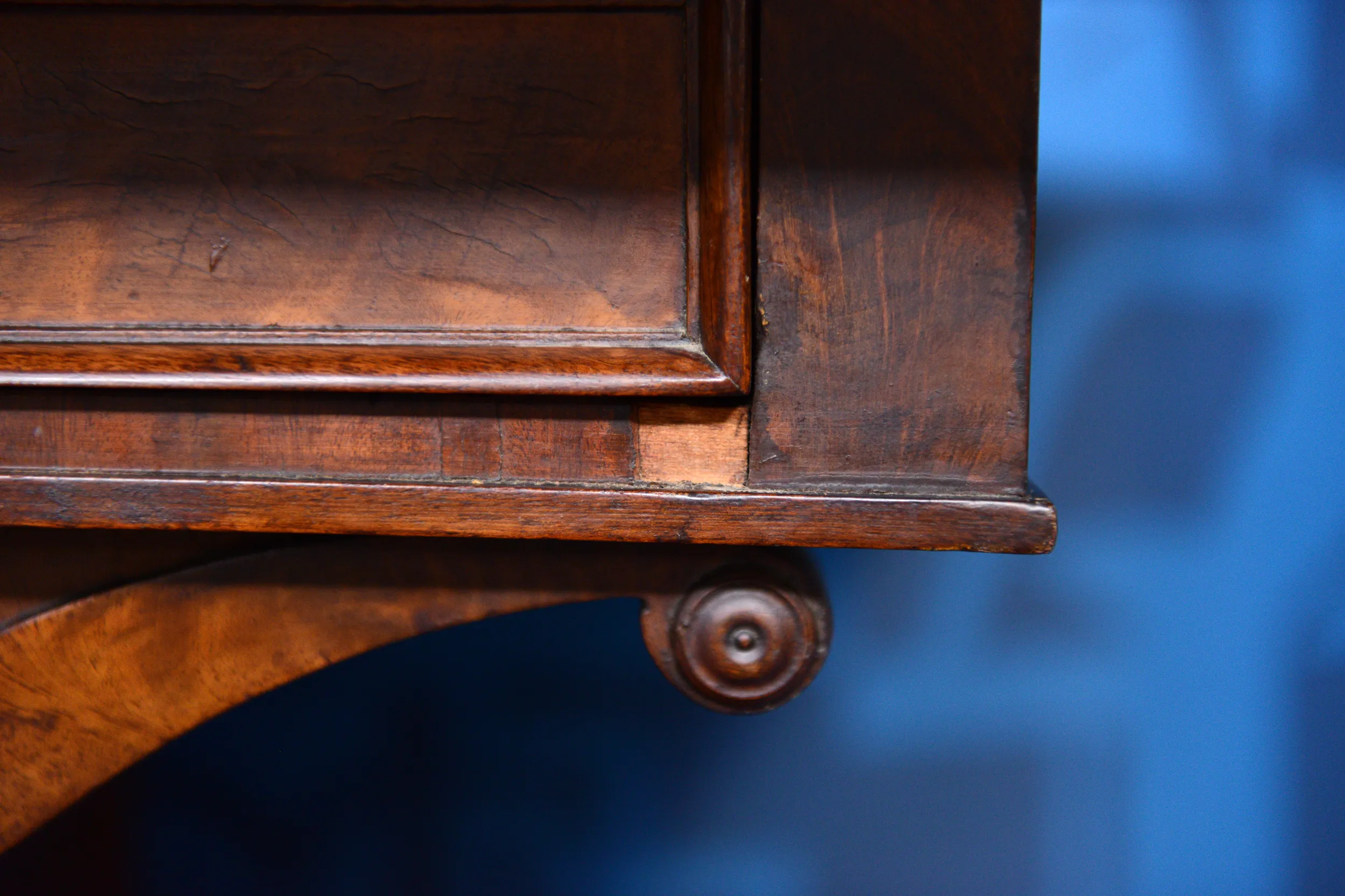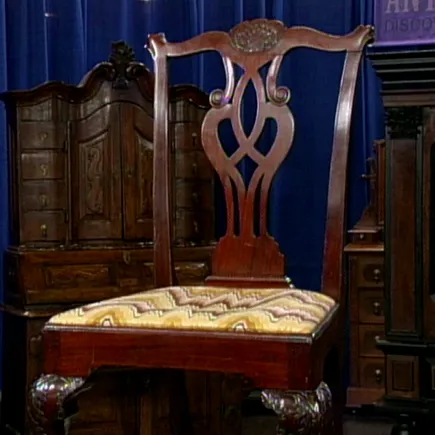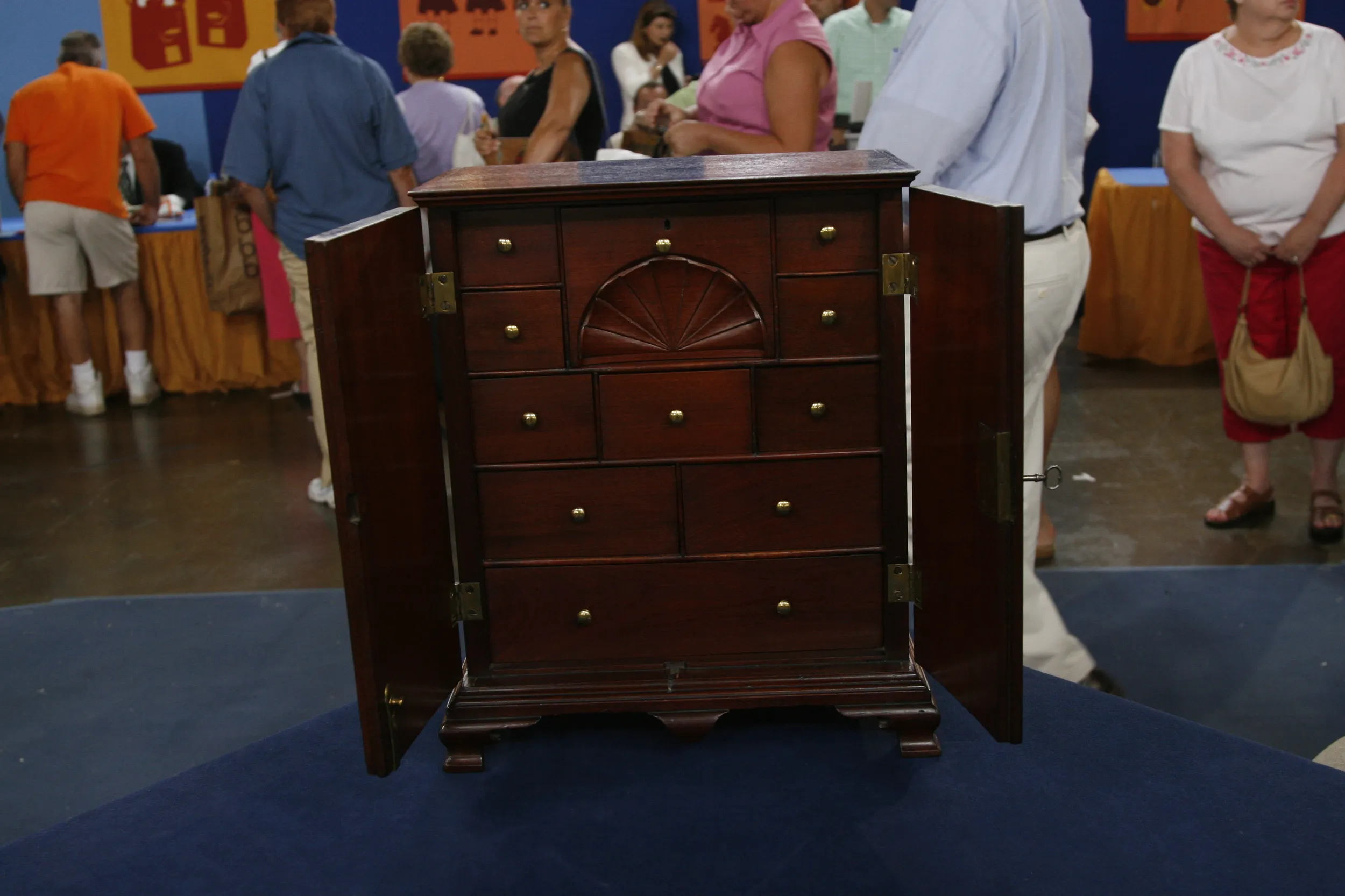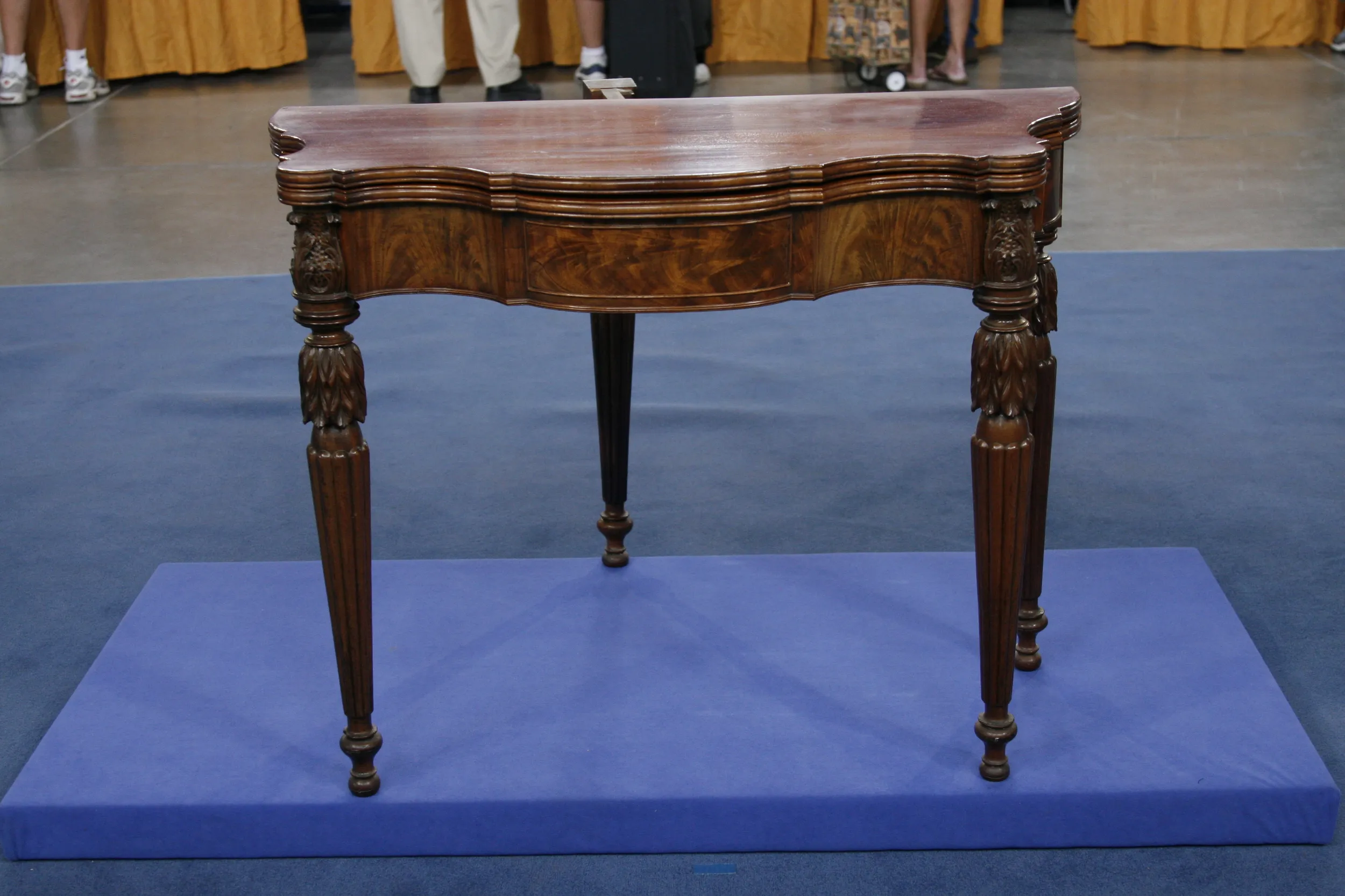GUEST: This is actually handed down to me from my parents. It's a meat serving table from about pre-Civil War. They were in Andrew Jackson's estate, and they did a tour of Andrew Jackson's, and one of these was in there, and they told them what it was. And when they were in St. Louis, they saw this at an estate sale and they picked it up for about $750 in 1982. That's about all I know about it, except for this marble is not the original one, unfortunately.
APPRAISER: No.
GUEST: It had a darker piece of marble before with, like, a blood groove in it, and during one of my folks' moves, it broke, and I don't know where it ended up. I was very sad that it got lost in the move.
APPRAISER: I don't actually think it was a meat serving table.
GUEST: You don't think it was?
APPRAISER: No, I think what it is is a mixing table.
GUEST: A mixing table?
APPRAISER: A classical mixing table, and these tables were made in the early 19th century, so this table dates from about 1820 or so.
GUEST: About 1820, okay.
APPRAISER: And it was made to mix drinks, drinks with alcohol.
GUEST: Really?
APPRAISER: Because if you had a table with a top and you tried to mix your drinks and some of the alcohol fell on the wood, it would really ruin the wood. And they started to make these tables with marble tops and some of them would have ceramic tops. You told me that this is not the original top, and I agree with you, it is not, so let's take it off and put it back here. And notice, when you take the top off, it almost looks like a Greek column. It's very symmetrical. You don't have this long overhang on the side. So the original marble, do you remember it?
GUEST: It was about this size.
APPRAISER: It was this size. Well, then, probably, it was not the original marble top to the table.
GUEST: Okay.
APPRAISER: Because the original marble top fitted exactly the size of this. We call this a classical form. It's probably made in Boston. They did a lot of this kind of form in Philadelphia, but when we look at the secondary wood, we see that it's white pine. If it were yellow pine, it would have been a Philadelphia piece. So it's a very high style, classical piece of furniture. A very wealthy person would have owned this. It does a lot, also. You can see that there's a drawer here that comes out so you could have stored your mixing accoutrements in there.
GUEST: Cool.
APPRAISER: And then also, there's a little door in the front, which opens up. On my side, there is a lock mechanism because you are locking up your tea, you're locking up your spirits. It's not a time when people are feeling as though they can just leave their things of value out. I love the placement of the lock mechanism on this because it is on the side so that when you look at this piece from the front, the facade is perfect. The wood that they've used on the facade, it's a mahogany veneer, triangular trade mahogany, very, very expensive wood in its day. And you can see the lovely figuring on it. The top is equal to the bottom. It's really a wonderful specimen and a very, very rare piece of furniture. I would say an auction estimate is probably in the $2,000 to $3,000 range.
GUEST: $2,000 to $3,000 range, wow.
APPRAISER: Yes, yes. If this had its original top, I would say that we have a much more interesting specimen.
GUEST: Okay.
APPRAISER: And I would probably estimate it in the $4,000 to $6,000 range.
GUEST: $4,000 to $6,000?
APPRAISER: Yeah.

